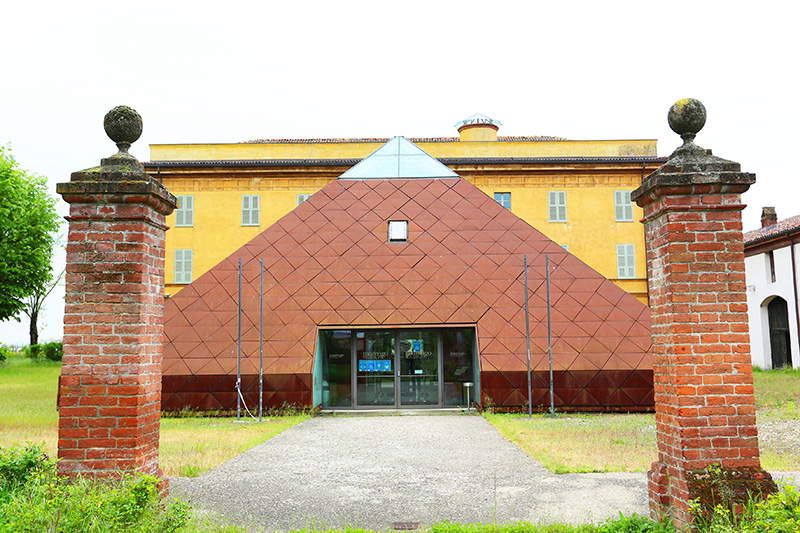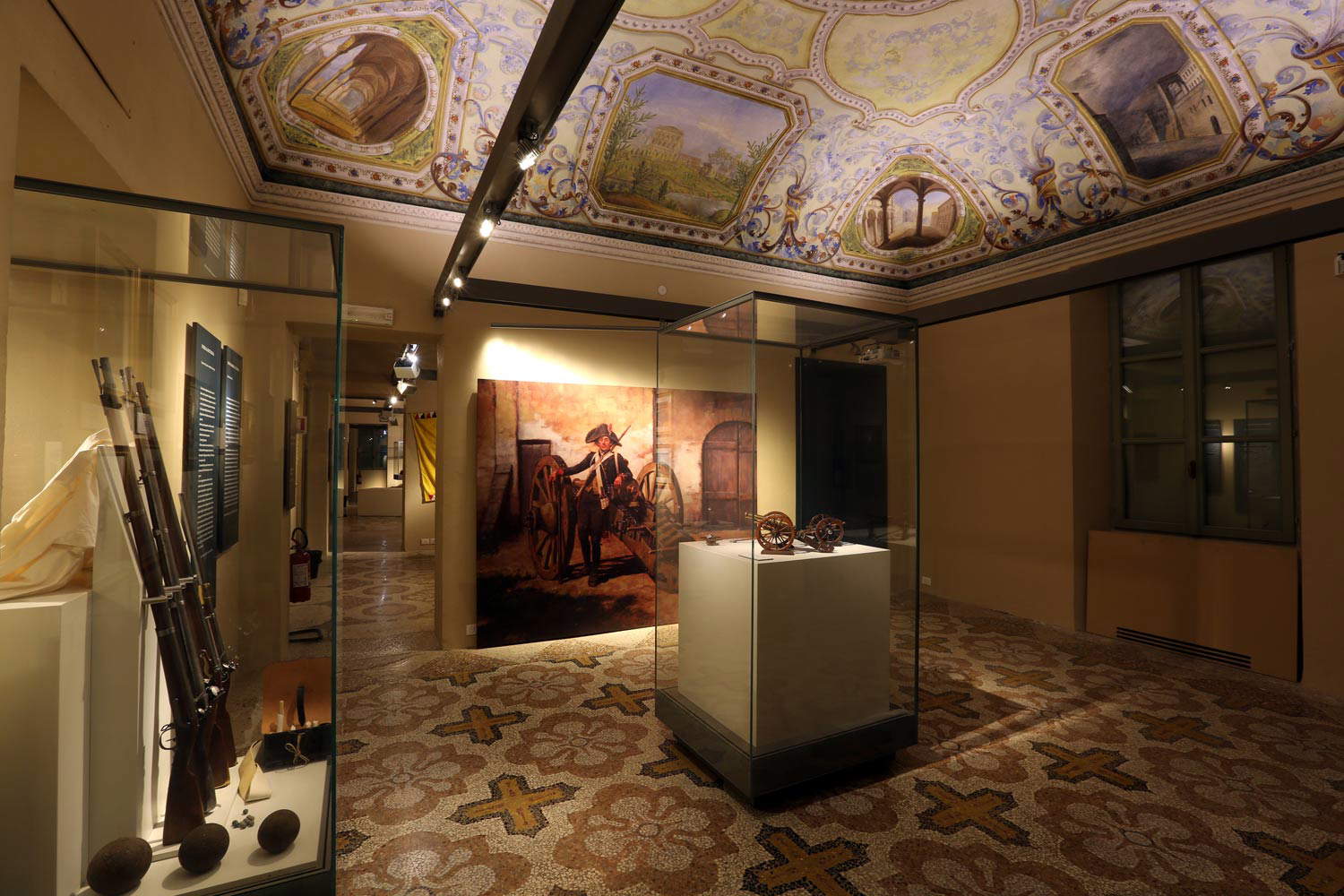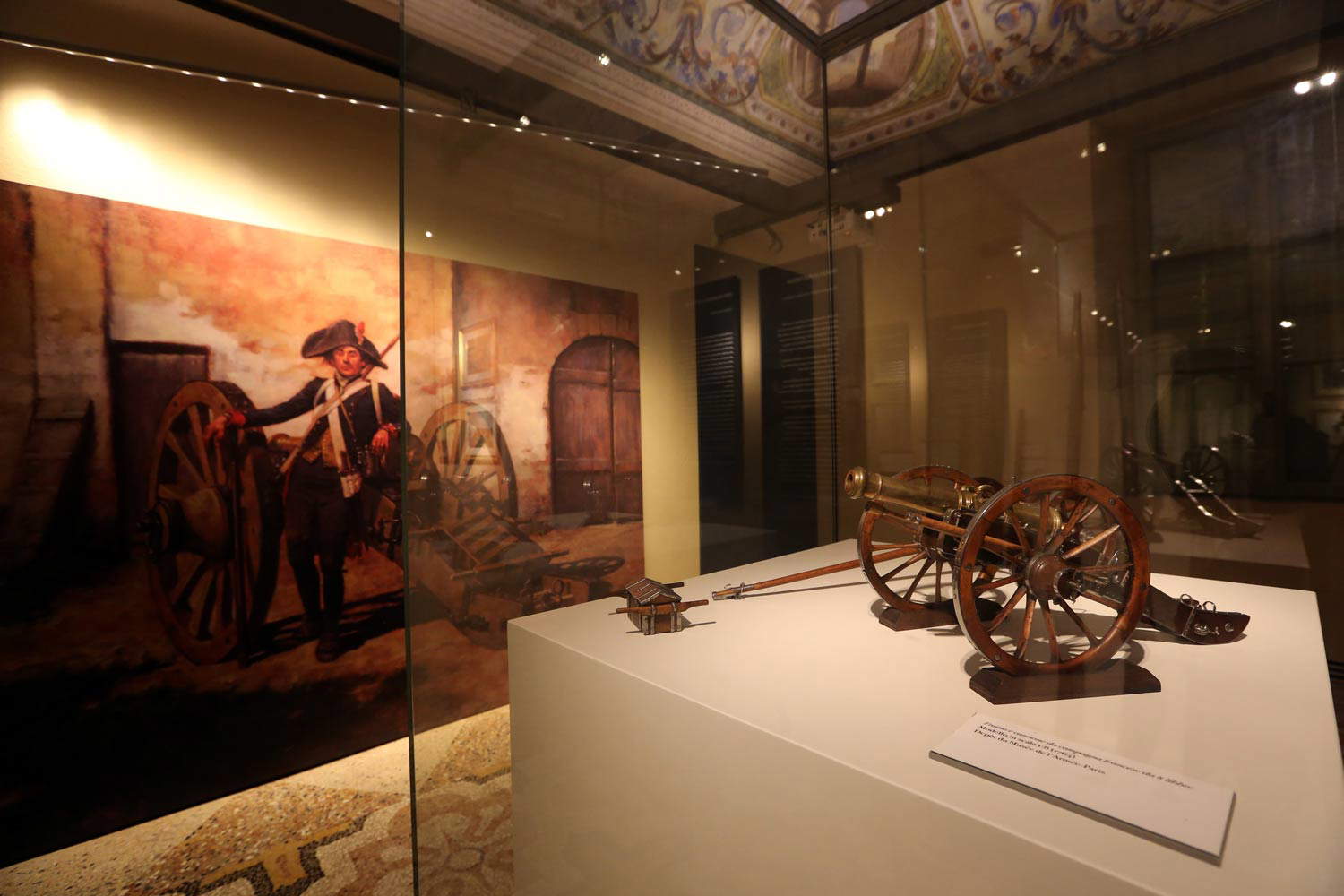by Redazione , published on 12/05/2021
Categories: Travel
/ Disclaimer
The city of Alexandria and its surroundings are one of the most "Napoleonic" territories in Italy. Here are the places that tell of a crucial fact of Napoleon's epic, namely the Battle of Marengo on June 14, 1800.
The second Italian campaign of Napoleon Bonaparte (Ajaccio, 1769 - St. Helena, 1821) ended, on June 14, 1800, with the Battle of Marengo: the French army led by Napoleon defeated, against expectations, the Austrian army led by Michael von Melas, near Spinetta Marengo, near Alessandria. Napoleon was First Consul at the time and managed to bring back a very important victory, which consolidated his rule over Italy. After the Battle of Marengo, in fact, Austria, which intended to maintain a strong position in Italy (and for this reason came the new clash with French forces), abandoned Lombardy, Piedmont, and Liguria.
The Battle of Marengo, the decisive event of the Second Italian Campaign, has gone down in history as a fortunate battle: this was because Austria had initially achieved several successes by going so far as to besiege Genoa (which was conquered by the Second Coalition on June 4, 1800), and Napoleon had to organize the campaign with considerable difficulty. The Corsican general, in fact, arrived in Italy with an army inferior in numbers to the Austrian army, tested by thecrossing of the Alps in May (which had become legendary and depicted in the works of several artists, starting with Jacques-Louis David), with insufficient means and inadequately supported soldiers (so much so that they were forced to loot the territory to feed themselves). Napoleon’s idea was to march on Milan (where the French entered in early June) and immediately seek a clash with the Austrians to cut their lines between Genoa and Milan. The first clash took place on June 9, 1800, at Montebello, near Pavia: here, the French managed to inflict a first defeat on the Austrians, who had to repair to Alexandria. The clash took place near the Bormida River, not far from Spinetta Marengo, because it was a key area for communications: the French seemed destined for defeat, but on the afternoon of June 14 the arrival of reinforcements led by General Louis Charles Desaix (who died during the battle, aged only 32, struck by a bullet) enabled the French to launch an unexpected counterattack, which ended in French victory.
Today there are still many places that tell the story of the Battle of Marengo, in and around Alexandria: the clash has entered into Napoleonic myth (so much so that it is considered Napoleon’s favorite battle) and can be retraced through numerous testimonies in the area.
 |
| Louis-François Lejeune, The Battle of Marengo (1802; oil on canvas, 180 x 250 cm; Palace of Versailles) |
The Marengo Museum at Villa Delavo: the museum of the battle
The Villa Delavo, a 19th-century residence in Spinetta Marengo, now houses the Marengo Museum, displaying artwork, period objects, books, documents, weapons, uniform maps, multimedia materials and more to document the clash of June 14, 1800. The entrance to the museum is the "Pyramid," which commemorates Napoleonic events. In 1805, in fact, Napoleon returned to Alexandria to celebrate the battle before the world. The day chosen was (ironically) May 5, and the leader appeared before a crowd of dignitaries and generals in the same uniform he wore on June 14 five years earlier. Napoleon wanted a great pyramid to be erected on the plain of Marengo, which, along with the sacrifice of General Desaix and his men, would eternally commemorate his victory: “Let it rise from stone to stone, as on that of Egypt.” Its construction began immediately and work was in the home stretch, but it was destroyed with the return of the Austrians to the area. The City of Alexandria built a new cast-iron Pyramid in 2009, which has become a symbol of the museum and Napoleonic Alexandria.
Original objects on display in the museum’s eighteen rooms include the inkwell used to sign the Austrian surrender after the Battle of Marengo, the letter in which General Louis Alexandre Berthier announced the victory at Marengo to Josephine de Beauharnais (Napoleon’s wife between 1796 and 1809). Also on display are important deposits from French cultural institutions such as the Musée de l’Armée in Paris and donations from local collectors, starting with the Napoleonic Society of Marengo. Of particular interest are the twenty paintings by two U.S. artists, contemporaries Keith Rocco and Christa Hook, who are among the leading contemporary battalionists as well as among today’s best-known painters of the historical genre; there are also prints by one of the leading Italian exponents of Romanticism, Giuseppe Pietro Bagetti. Plus, weapons from the battlefield, the original uniforms, rifles, guns, cannons, specially made dioramas, films, music, children’s trails, the park and battle charnel house, and, in the courtyard of honor of Villa Delavo, the statue of Napoleon First Consul.
Villa Delavo, built in 1847 at the behest of pharmacist John Anthony Delavo to commemorate Napoleon’s victory and owned by the province, has been completely renovated and restored, bringing back its paintings and frescoes. On display in the courtyard of Villa Delavo is a commemorative bust of General Louis Charles Desaix, commissioned by Delavo himself. The villa also has many exterior perspective decorations by Gabetta, and interior decorations by Paolo Maggi, a 19th-century painter active between Piedmont and Lombardy. Francesco Mensi, an artist trained between Neoclassicism and Romanticism, created there the large painting of theApotheosis of Napoleon, whose preparatory drawing is visible today. Also in the park is the chapel/ossuary that Delavo had erected to gather the remains of the fallen soldiers, near the bust of Desaix. Information can be found at www.marengomuseum.it.
 |
| The Marengo Pyramid Museum |
 |
| The Pyramid at the Marengo Museum |
 |
| The statue of Napoleon at the Marengo Museum |
 |
| Interior of the Pyramid |
 |
| The crossing of the Alps by Napoleon’s army in a print by Bagetti |
 |
| The Marengo Museum |
 |
| The exhibition halls of the Marengo Museum |
 |
| The exhibition halls of the Marengo Museum |
 |
| The exhibition halls of the Marengo Museum |
 |
| The bust of Desaix |
What to see: the sites of the Battle of Marengo in and around Alexandria, including art and history
A tour of the sites of the Battle of Marengo can begin at the bridge over the Bormida River, rebuilt in the Napoleonic period over the Romanesque bridge built by Benedictine monks in the 14th century. The Austrian army passed through here before the clash against the French army. At the bridgehead stands the giant plane tree that tradition says was planted in 1800 by Napoleon to honor the approximately 2,000 soldiers who died on the day of the battle and the 10,000 wounded on both sides. The plant is over 200 years old and about 40 meters tall (its foliage covers an area of about 400 square meters in spring-summer). The tree is owned by the City of Alexandria and protected by the local superintendency.
Palazzo Ghilini in Alessandria, is a Piedmontese Baroque-style building, one of the most monumental in its historic center. It owes its name to its patron, Marquis Tommaso Ottaviano Antonio Ghilini, who had it built in the 18th century. In 1804 it appears that Napoleon via stayed during his trip to be crowned emperor in Paris. Later, on May 14, 1859, the palace is said to have hosted Napoleon’s nephew, namely Napoleon III, at the beginning of the Second War of Independence: in the same palace, a few days earlier, General François Certain de Canrobert had taken lodging with the General Staff of the French army that would support the Italians in the war against Austria.
Still, the Citadel of Alexandria constitutes one of the grandest European monuments in the field of permanent fortification of the 18th century, one of the few still standing and certainly one of the best preserved in Europe. It is the only lowland fortress built by the Savoy family in the 18th century and is the only European fortress still set in its original environmental context. Napoleon Bonaparte, after the triumphs of the Battle of Marengo and his ascension to the imperial throne of France, decided to expand and restore the fortress and surround the city with new defenses and eight new fortifications in order to create a large logistical base intended to support the operations of the French army deployed in northern Italy, urban development was planned in the built-up area of Marengo. During the French occupation, the location and effectiveness of the modern fortifications made the Citadel one of the most spectacular fortresses in the empire and the richest arsenal in all of Europe. Napoleon wanted to make the Citadel a kind of “eastern gateway” to France.
In Alexandria you can also visit the Civic Museum, located in a wing of the Palazzo Cuttica di Cassine (visit the Napoleonic rooms, and admire the armchair of Empress Maria Luigia, the choir books of Pius V, archaeological finds, collections of paintings, prints, and photographs, and art rooms with the collection of Giovanni Migliara and the frescoes of the Arthurian cycle). Other Napoleonic routes pass by Novi Ligure where the Napoleonic battle of 1799 was fought, and then by Torre Garofoli, Napoleon Bonaparte’s command on June 14, 1800, by Piovera Castle and by Monte Castello, from where the Marengo plain can be seen and which is depicted in prints of the time, ending in Castellazzo Bormida, on the country road known as the "Red Road," so called because of the blood shed by the opposing cavalry that crossed it on the fateful June 14, 1800.
 |
| The giant plane tree at the bridge over the Bormida River. |
 |
| The Civic Museum of Alexandria at Palazzo Cuttica in Cassine |
 |
| The Citadel of Alexandria |
 |
| The Citadel of Alexandria |
 |
| The Citadel of Alexandria |
 |
| Alexandria and Napoleon: the places that tell the story of the Battle of Marengo |
Warning: the translation into English of the original Italian article was created using automatic tools.
We undertake to review all articles, but we do not guarantee the total absence of inaccuracies in the translation due to the program. You can
find the original by clicking on the ITA button. If you find any mistake,please contact us.
















